While the manufacturing and pharmaceutical sectors have often been cited as leaders of innovation, the construction sector could be accused of conservatism towards new technologies.
But things are changing fast and the government’s BIM Level 2 mandate introduced last year was a catalyst for the industry to embrace new technology and ideas. BIM, in tandem with virtual and augmented reality, robotics, mobile technology and apps, construction is moving into an exciting new era.
Construction Manager interviewed five of the industry’s digital and innovation heads and asked them for their views and predictions on what we might see on site this year and beyond and what will make the most impact.
This article first appeared on BIM+’s sister title Construction Manager.
‘We’ll start to see the benefits of virtual and augmented reality’
Colin Evison, head of innovation, BAM Nuttall

Technology I can’t live without…
BettyBot, our domestic helper, produced by iRobot – not very glamorous but she does great work!
What are the breakthrough technologies for 2017?
I think we’ll really start to see the real benefits of augmented reality (AR) and virtual reality (VR) and what they can bring to the sector. The gaming environment, construction, engineering and infrastructure are all starting to collide and I think this will add real value next year.
This can lend itself to simple things such as making it easier to understand projects, through to training or health and safety. You have technology such as BIM Caves, which are useful but take time to move and assemble.
But now there is the Microsoft HoloLens which is less arduous to move around in terms of equipment. It’s very interesting and something we’ve been trialling in our offices. It’s early days on how it might be used but perhaps you could have two people working on a project in different parts of the country, but through the HoloLens they can work together in real time.
Another area that I see rapidly growing in 2017 and beyond is the use of robotics on site. I believe we’ve just started to scratch the surface. For example, there’s spray concrete robots on Crossrail, but they’re really just operated machines, there’s a lot more that can be done. The next level is to be properly automated.
Outside of construction, what industries are getting you excited?
In terms of other industries, I’m having a meeting with the Nuclear Advanced Manufacturing Research Centre in Sheffield before the end of the year, seeing what they are doing and seeing
if is there anything we can bring across to construction.
It’s all about looking at the different industries and their approach, technology, ways of working, anything really.
Are there any technologies that you think might be overhyped?
I guess the B word, BIM. I spent the best part of the year going around our businesses talking about BIM. But still you wonder how much it has really taken hold. Still some people, smaller businesses, some suppliers, can be wary in their take-up and you get resistance.
This is how we do business. The simple example is we build three-dimensional bridges, so why would you have a 2D design? I think we need to get over the hype or hesitance and just get on with it.
What’s on your radar for 2017?
In terms of our plans, we hope to continue working with start-ups such as Converge, which specialises in concrete testing and has developed new automated sensor technology, which is now used on many of our sites. Normally, cubes of concrete are taken from pours and stored, before being tested for strength later to determine when formwork and shuttering can be removed.
The Converge system automates the process, with a sensor placed in the concrete that knows when the concrete has reached the required strength.
We’re also starting to look at basalt fibre. It’s a different way of reinforcing concrete and I think it holds promise for the construction industry. It’s limited so far, but it’s supposed to be stronger than steel, lighter, and doesn’t corrode or conduct electricity.
It has a similar chemical composition as glass fibre, but has better strength characteristics, and unlike most glass fibre it is highly resistant to alkaline, acidic and salt attack, making it a good candidate for concrete, bridge and shoreline structures.
It’s a long sale, so it’s about looking for the right customers who want to invest/work with it.
On a smaller scale we’ve recently created a simple virtual reality app for smartphones that enables us to get information and awareness of our work and projects out more.
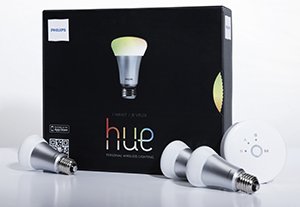
Philips Hue lamps
It works by downloading the app to your smartphone which is then placed in a basic fold-out cardboard VR viewer that we are giving away. Like a View-Master from your childhood. It showcases our project delivery capability to customers and also helps us tap into the younger generation.
Looking across the sector, I hope there will be, and think there needs to be, some progress in tech and health and safety. The industry realises there’s so much that can be done. Rates of accidents have decreased in the last few years, but this can be halved or quartered again.
Wearable technology has come on. Even simple apps or wearables that monitor health and movement can help change behaviours on site and promote a healthier workforce. Smart vests, for example, which allow on-the-job monitoring of body temperature and heart rate, are already in use on some sites.
Some tech companies abroad have now developed exoskeletons. These are suits that can help you carry three times your bodyweight or move faster. These are things we saw in a film 20 years ago, but it’s now reality and could become common place on a construction site in the next few years.
What are you looking for in the January sales?
My iPad mini is getting a little old now but I don’t expect a new one to be slashed in the sales.
It would be great to get our hands on HoloLens, and I think I will have to be looking out for Google Home and a few Philips Hue lamps.

‘Digital engineering is the biggest thing for us’
Sam Stacey, director of innovation and business improvement, Skanska

Technology I can’t live without…
Adaptive cruise control. It takes so much of the stress out of motorway driving.
What are your top picks for 2017?
Digital engineering, specifically geographic information systems, is probably the hottest topic for us at the moment. It involves collecting data about what’s out there in the world, such as where our projects are, where our suppliers are, what the transport routes are, the movement of people and equipment. Getting hold of all these datasets, piecing them into maps and tracking them.
On the basis of this, through data analytics and human intelligence, you can start to spot efficiencies and opportunities. It can then be used for procuring and tendering for projects.
I think holograms also have a big role in the future. It’s one step on from VR and AR and I think we’ll see them developed for site training and health & safety.
What else are you looking at?
We’re always looking at the manufacturing industry and I think our industry needs to replicate it in terms of efficiency levels, innovation, and less waste. The gap in waste between the manufacturing industry and construction is huge.
But I do think next year and the next few years will be exciting and that gap will close. We need to capture and share knowledge at all levels and this will help create a culture of innovation in the industry.
Logistics is another area where construction needs to catch up – look at companies such as Amazon, which are leading the way and being innovative. What tech should people be moving on from?
I think people need to look beyond BIM. BIM is a foundation. You don’t just get your Level 2 and leave it there. You have to evolve and once you’re engaged with BIM, or organisations with the right attitude and relationships, the benefits can be great, but it’s a starting block.
What is Skanska’s tech plan?
We recognise the need for continuous improvement and staying at the forefront of technology. We invest around £12m a year in research and development and actively search for grant funding opportunities across the UK and beyond. This enables us to work with external organisations such as BRE, universities and other companies to collaboratively find solutions, innovate and develop new technology.
An example of this is what we’ve been doing with fibre optics. Working alongside Cambridge University, Cementation Skanska is using distributed fibre optic sensing techniques for pile and wall integrity testing during excavation work for the new tube stations and tunnels on the extended Northern line. The traditional way has been to use sonic tubes, which you have to install in the reinforcement cage, before you pour concrete. Fibre optics replace these sonic tubes. It’s cheaper, it’s a lot safer and you get better data and long-term data.
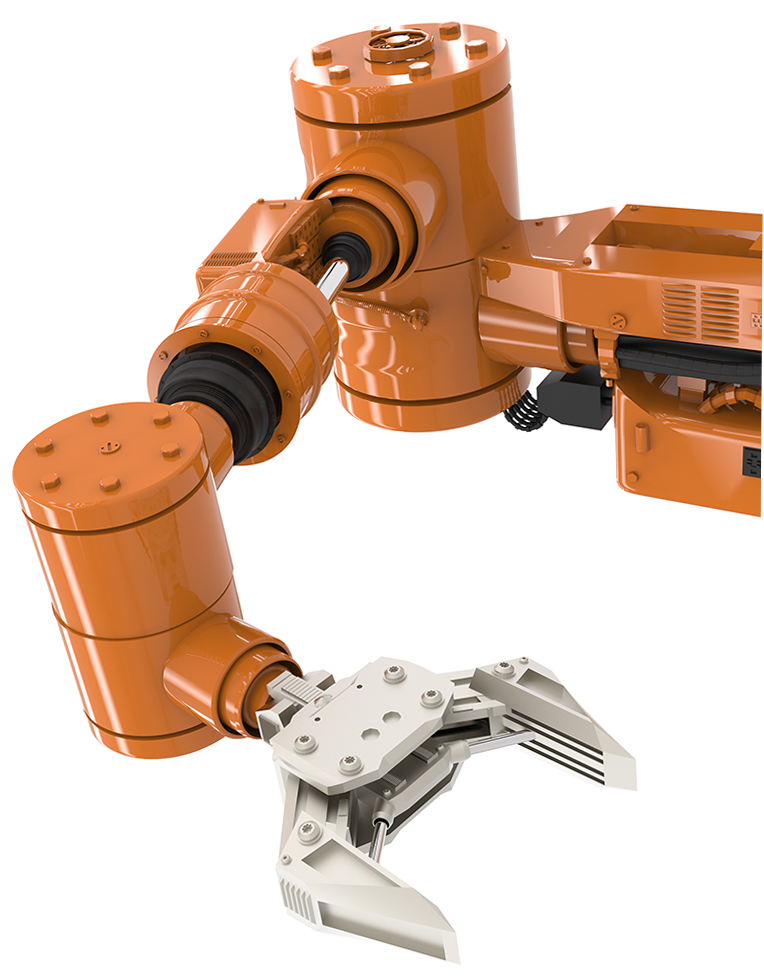
Low-cost standard telecommunication fibre optic cables are attached to several sides of the reinforcement cage of the element and temperature measurements obtained at close spatial intervals along the cage. The measurements are taken at short time intervals to record the evolution of the temperature profile of the element during concrete curing.
This application of fibre optic sensing emerged from research at the University of Cambridge and was standardised by the Cambridge Centre for Smart Infrastructure and Construction. The commercial application of distributed fibre optic sensing by Cementation Skanska has allowed it to add a new specialist service to its portfolio, called CemOptics.
Elsewhere, we also have a tie-up with ABB Robotics to make robotic construction units to carry out tasks on site, including cutting, drilling and fixing. It is expected they will be ready for use by mid-2017.
3D printing is clearly of interest to us. We’ve been working with Loughborough University and architecture practice Foster + Partners over the past two years to study and develop the technology.
Are there any tech/gadgets that you’ll be eyeing up in the January sales?
I like the look of the Dobot Magician – a robot arm to add to the set of DeWalt tools in my workshop!

‘We can learn so much from the motor racing industry’
Tom Loader, head of digital, Balfour Beatty

Technology I can’t live without…
Bose headphones, they help to get me through the London rush hour.
What are you working on for 2017?
We’re particularly interested in VR/AR and how this can be used on site, such as for planning work, quality management, safety and inspection.
We are also hoping to make a further push into data analytics. We’re interested in how this raw data can be used and correlated, for example for tendering, working on site and improving health and safety. The data could also be used to track people and equipment movements, and tell us how a site works.
What else are you enthusiastic about?
The motor racing industry and that whole sector is something I think the construction industry can learn so much from. We’ve worked on the National Automotive Innovation Centre in Coventry for the University of Warwick and this has exposed us to the sector.
Their innovation cycle really is something to behold. How they capture raw data live and then are able to calculate it and come up with solutions to problems and make things more efficient is amazing.
Are there any areas of technology you’re ignoring?
No, I think everything is fair game and improvements and exploring new technology will be beneficial everywhere. As an industry I would say we’ve actually been quite cautious till now so the developments of any new areas are a bonus. Look at mobile apps on site – only a few years ago they were trying to find their feet, now they’re becoming standard. So I think nothing should be discounted.
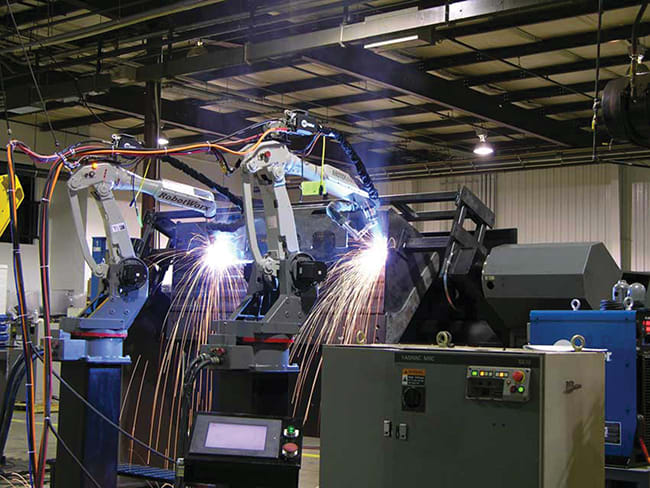
What’s your take on 2017 and beyond?
We’ve always had the feeling that the wider application of technology is still yet to take hold, but we have been investing and developing our work in it, in areas such as drones, apps, VR and AR.
Looking ahead, it’s about working with what you have to the best of your ability. For example, when it comes to VR/AR, we found that we had the capability already in the business, people who had worked in the gaming industry and through that we can build apps and virtual programmes for sites.
One thing we’re very much invested in at the moment is data analysis. Over the past year we’ve been pushing mobile platform apps on site. This data can be collected and used for simple things such as logistics to improving working.
Another area we are looking at is construction robotics. Our view on this is to try to invest and develop autonomous robots and bring them into some of the labour-intensive or dangerous tasks on site. We’re partnering with Imperial College London and University College London on how we can bring some of this forward.
Are there any tech/gadgets that you’ll be eyeing up in the January sales?
A new toaster. (I don’t buy many gadgets!)

‘Gaming engines will continue to creep into construction’
Andy Radley, group BIM director, Kier Construction

Technology I can’t live without…
Amazon Echo – we’ve called it “Hey you”, as my wife and I now use it to tell us things or give us reminders.
What’s Kier’s main focus for 2017?
I think gaming engines and their use in construction will continue to be a theme next year, for things such as BIM and 4D building sequencing. We will continue to focus on BIM and its development so that it runs through everything we do, rather than being a workflow separate from people’s day jobs.
Outside of construction, what industries are getting you excited and will you be monitoring?
We’ll continue to monitor the gaming industry as the development in this sector is very fast and the use of game engines and game technology can be applied to construction apps and programmes for training and health and safety, such as simulating work environments.
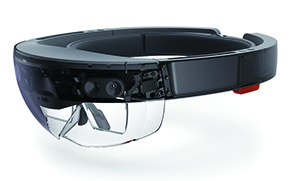
Are there any technologies that you think might be overhyped?
Augmented technology I think is a little overhyped at the minute and will take time to become practically useful on site.
Overall view
For us it’s about getting the fundamentals in place before moving ahead. So we’ve developed an innovation portal, it’s a bit of a Dragon’s Den scenario. People come on and pitch their proposals and they can possibly be developed and it spans out across the whole company.
Generally speaking we’re trying to reduce our spend on laptops, be more in the cloud and promote the use of tablets on site.
Are there any tech/gadgets that you’ll be eyeing up in the January sales?
Home automation systems. They have the potential to make so many things much easier when you’re away from home.

‘Offsite and standardisation is what we’re keeping an eye on’
Tim Carey, product director responsible for innovation and improvement, Willmott Dixon

Technology I can’t live without…
Netflix.
What’s on your radar for 2017?
We’re quite interested in AR/VR, but we’re not as far advanced in development as others.
We’re also trying to move our business more towards standardisation, components, repeatable products and an overall push towards offsite.
Where are you looking for inspiration?
The manufacturing industry is something we are aware of and keen to replicate. We’ve been into places such as Land Rover’s plant to look at how they work. I think overall as an industry we look too much at what our competitors do and not at what we can cross pollinate from other sectors.
Manufacturing, especially for the areas of offsite and standardisation that we are aspiring to, is what we’ll keep an eye on.
Are there any technologies that you think might be overhyped?
3D printing I think is still five to 10 years off from proper adaptation to the industry. It has the potential to be really great, but I think it’ll take some time yet. I think BIM is slightly overplayed, it’s like when the Millennium bug first came around, a whole industry emerged around that. I think a lot of the industry is slightly exploiting people’s lack of knowledge and this is something that should be looked at.
What can we expect from Willmott next year?
The main area that we’re focusing on for this year, and where we hope to see improvements in tech and innovation, is offsite, standardisation and repeatable products.
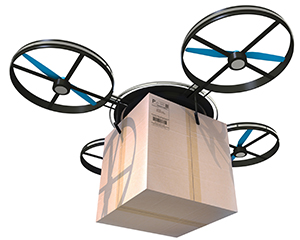
We already use some of these techniques in Sunesis, our JV with Scape providing pre-designed buildings, but we’re trying to replicate this repeatable product across all parts of the business.
We’ve been quite vocal about wanting to build 1,000 homes a year through offsite by 2017, half of the 2,000 homes we already deliver. This will be achieved by signing agreements with other suppliers and investing in technology. We’ve already signed agreements with Robertson Timber Engineering as sole supplier of timber frame products and Fusion Building Systems for light-gauge steel frames.
Another area that I think will be interesting next year is asset tagging of buildings once they’ve been completed. There’s a lot more that can be done with that. Just learning more about how a building is used and the movement of people within it can help with future designs and construction.
What tech/gadgets are you eyeing up in the January sales?
Given the usual christmas excesses, I think a FitBit may be in order.

A Beginner’s guide to tech
VR: Virtual reality is a computer-generated simulation, a 3D world you see and experience wearing a helmet or VR viewer
AR: Augmented reality is similar but it blends both the real world and virtual through smart glasses.
Exoskeleton: A wearable robotic suit that can make people stronger or faster. An example is one Tom Cruise wore in the sci-fi film Edge of Tomorrow.
3D Printing: 3D printing is a type of modern-day manufacturing, which makes a physical object from a virtual model. It’s similar to the ink-and-paper printers which we’re all familiar with, but instead of traditional ink, 3D printers squeeze out a variety of different filaments and print layer-by-layer until the virtual model is reproduced in physical form.
BIM Cave: A mobile, virtual reality dome that can be set up like a tent. It gives people a realistic and accurate 360 view of projects.
Construction’s most innovative
Is your company at the cutting edge of innovation? Then look out for more details of a new scheme we are launching next month to recognise the wealth and breadth of talent in the sector. As part of “Construction’s most innovative” we’ll be searching for the UK’s top 20 most innovative companies, highlighting the individual who is doing the most to drive innovation and asking readers to vote for the best new idea. We’ll be announcing more details of how you can take part in the coming weeks.
Another area that I see rapidly growing in 2017 and beyond is the use of robotics on site. I believe we’ve just started to scratch the surface. For example, there’s spray concrete robots on Crossrail, but they’re really just operated machines, there’s a lot more that can be done. The next level is to be properly automated.– Colin Evison, Bam Nuttall
We invest around £12m a year in research and development and actively search for grant funding opportunities across the UK and beyond. This enables us to work with external organisations such as BRE, universities and other companies to collaboratively find solutions, innovate and develop new technology.– Sam Stacey, Skanska
The motor racing industry and that whole sector is something I think the construction industry can learn so much from. We’ve worked on the National Automotive Innovation Centre in Coventry for the University of Warwick and this has exposed us to the sector.– Tom Loader, Balfour Beatty











